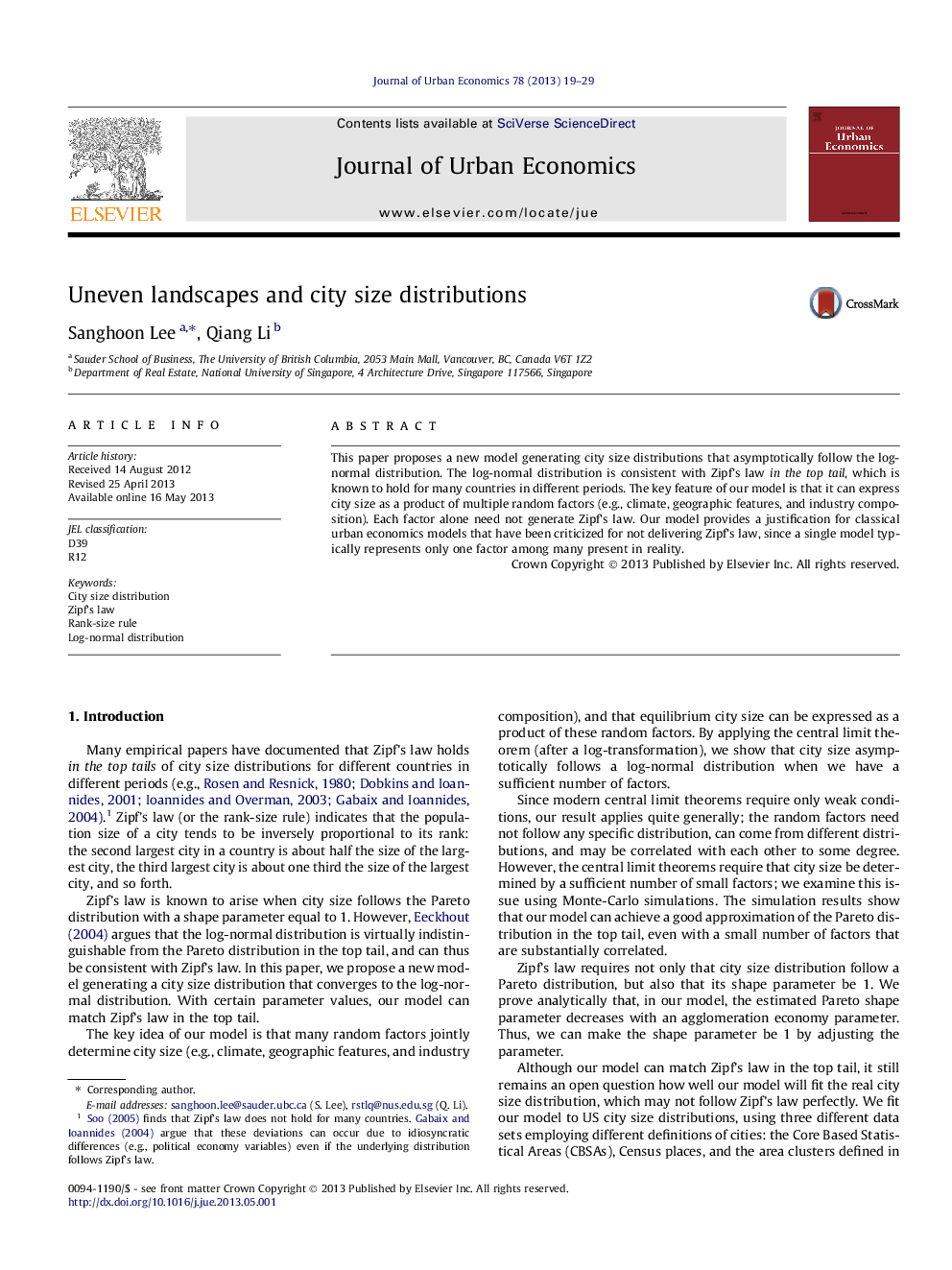| Article ID | Journal | Published Year | Pages | File Type |
|---|---|---|---|---|
| 970771 | Journal of Urban Economics | 2013 | 11 Pages |
Abstract
This paper proposes a new model generating city size distributions that asymptotically follow the log-normal distribution. The log-normal distribution is consistent with Zipf’s law in the top tail, which is known to hold for many countries in different periods. The key feature of our model is that it can express city size as a product of multiple random factors (e.g., climate, geographic features, and industry composition). Each factor alone need not generate Zipf’s law. Our model provides a justification for classical urban economics models that have been criticized for not delivering Zipf’s law, since a single model typically represents only one factor among many present in reality.
Related Topics
Social Sciences and Humanities
Economics, Econometrics and Finance
Economics and Econometrics
Authors
Sanghoon Lee, Qiang Li,
